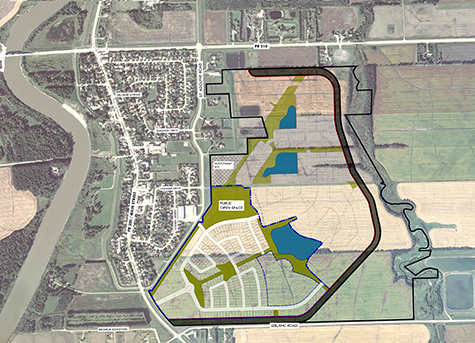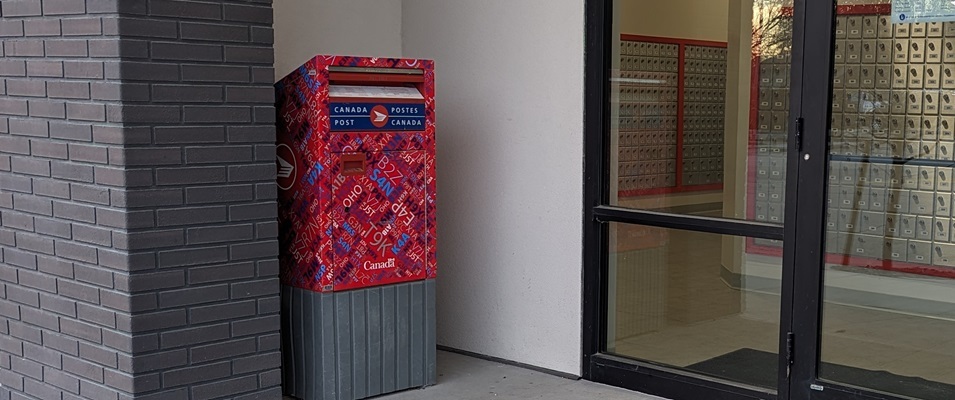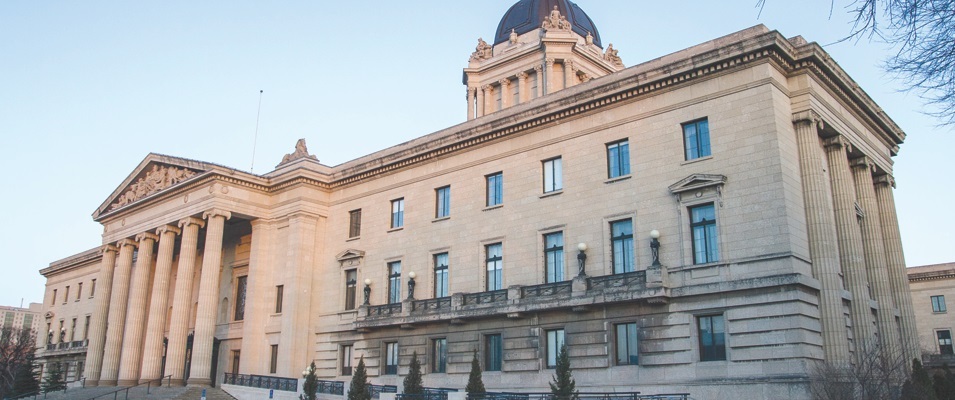
Communities in the southeast are growing and flourishing, and St. Adolphe is no exception with the East Dike Expansion project. Like many small communities, St. Adolphe has the makings for quiet rural living but, hemmed by the Red River and a ring dike, residential growth is difficult.
The dike expansion project is an impressive endeavour, adding over 300 acres of land to the town for development into residential and commercial space. The new dike extends from the south and east of town all the way to Provincial Highway 210 on the town’s north side.
The new dike is budgeted at $6.9 million, the cost of which is shared three ways between the federal and provincial governments and the developer, the St. Adolphe Land Company (SALC).
“The East Dike Expansion is a project that has been on the table for a number of years,” says Lesley Gaudry, Economic Development Officer for Ritchot. “As the capital region continues to grow in population, and infrastructure funds were available for dike construction, the project came to fruition.”
Tourond Creek, the residential and commercial development within the dike, was aptly named for the tributary that runs just east of the development, and for its francophone connection.
SALC’s David Palubeski says the area has the potential for 1,400 new residential units. Phase One, already under construction at the south perimeter of town, will initially see 90 new lots. 40 percent of these have already been sold to developers.
Palubeski says that young families are SALC’s primary target demographic, but the company recognizes the need for singles and retiree homes as well. Along with single-family homes, he anticipates multi-family units, townhouses, and three-story condos. The development will eventually see the addition of three large lakes providing for walkout basement lots.
A development surrounded by a dike provides a unique challenge for developers, since they must find ways to deal with the lots just inside the dike’s perimeter. SALC plans to overcome this hurdle by integrating the grading of the dike into the elevation of the adjoining lots. According to Palubenski, the main and second floors of those homes will have a view overlooking the dike, reducing the closed-in feeling.
Six and a half acres have been set aside for commercial development, which the developers hope to get started on in 2017.
“You have a sense of neighbourhood in a small town,” says Palubeski, who anticipates city families setting down roots here. “We are able to provide lots that are larger than the city, [that cost about] 25 percent less than similar-sized [urban] lots.”
The average lot size will be about 60 feet wide by 120 feet deep. Lake lots will be larger, at 65 feet wide by 190 feet deep. Building permits will become available upon the dike’s completion in late September of this year.
“Growth has its advantages and its challenges,” says Gaudry. She cites diversity in housing options, an increased tax base, opportunities for recreation development, and job creation among the positives. The challenges, according to Gaudry, will be providing services such as daycare, infrastructure, parks, and recreational development. She says that the RM of Ritchot will have to take a close look at school space and health services.
“At the end of the day," Gaudry says, "the Municipality of Ritchot and its residents are a talented, generous, resilient, and kind population and it is the people that make a place.”




















